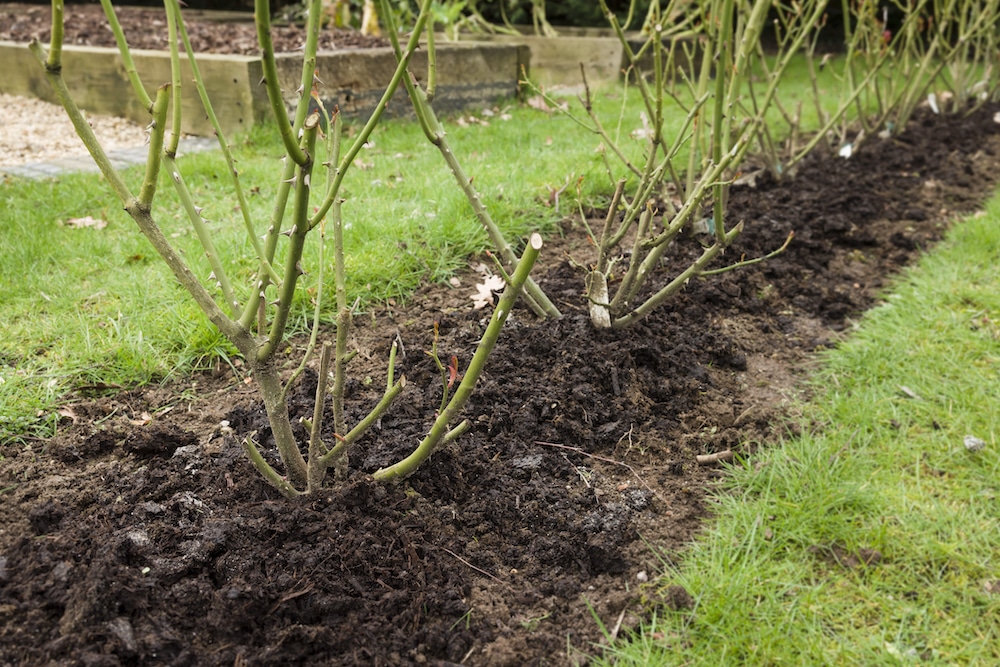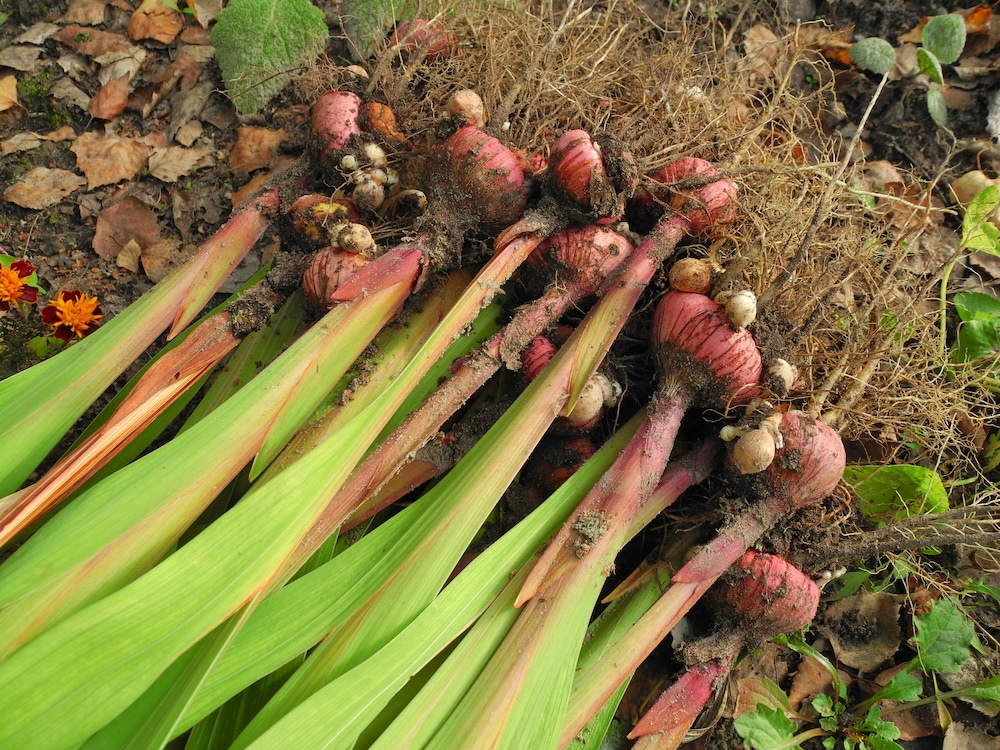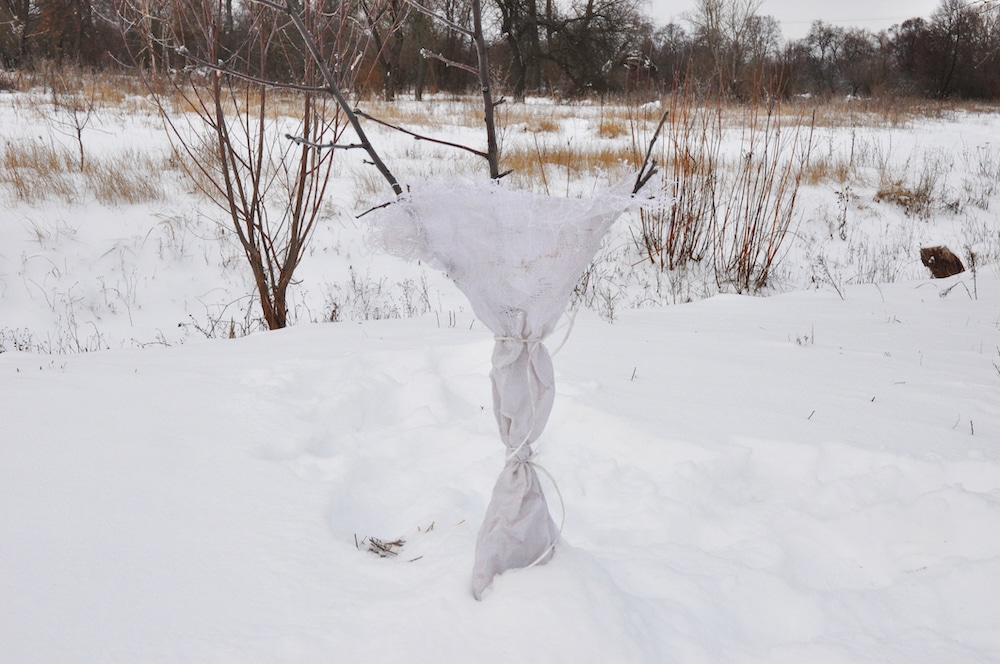
Winter is rolling in, and in many zones, our once-prolific tomato and cucumber plants are well past their prime. While the summer growing season is over, gardens still benefit from a little TLC before the snow falls. Here’s how to prepare your garden for the winter to prepare for next year’s harvest.
Mulch

The cold-weather cycle of freezing and thawing can cause something called “frost heaving,” whereby buried roots get pushed out of the ground. Providing some kind of groundcover keeps the temperature of your garden soil regulated, and protects it from winds and snow during the winter. It reduces germination of weeds in the spring, which means less weeding for you. You can purchase mulch from a garden center, or use a material you already have on hand, like bark, straw, fall leaves shredded with the lawn mower, pine needles and grass clippings — you’ll remove it in the spring to allow new growth to return. After the first frost, apply about six inches of the groundcover over your beds and around perennials, especially around young perennials facing their first winter.
Dig Up and Store Bulbs

Many bulbs that bloom in the spring can make it through the winter, like crocuses, daffodils, hyacinths and tulips. But when it’s time to plant these, it’s time to dig out some others. “Tender” bulbs — many of which are tropical plants that bloom in the summer, like cannas, dahlias, elephant ears and gladiolus — won’t survive a freeze. After frost has browned the leaves of the plant, dig up the tubers or roots within a few days. To prevent damage to the bulb — which can let in disease – dig out the entire plant, leaving a large clump of soil around the bulb. Using a fork rather than a shovel can also help prevent damage.
After digging them out, cut off greenery and remove the soil from the bulb, then let them dry out for about a week indoors out of direct sunlight. Pack the bulbs in a cardboard box, wrapped loosely in newspaper, peat moss, sand, coconut coir, sand, vermiculite, or sawdust so they don’t touch. Store in a place that stays somewhere between 40 and 50 degrees, like a basement, root cellar, or unheated garage. It’s a good idea to label them too so you know what you’re planting come spring.
Bundle Up

Not all plants need to be wrapped up in the winter, but some benefit from it, like young evergreen and deciduous trees. At the end of the winter, intermittent freezing and thawing can split the bark of young trees. Wrapping up their trunks with a crepe paper-like wrap at the beginning of the season can prevent them from injury. Mice and other small rodents love to gnaw at the bark of young fruit trees, so wrapping the lower trunk with a tree wrap designed to keep out pests can keep them protected.
Spread Compost

Late fall is the perfect time to use those veggie scraps and yard clippings that have been decomposing in your compost pile. Before the ground freezes, spread about 3-6 inches of compost over your garden. This helps keep the soil warm, and continues to add nutrients to it throughout the winter, leaving you with a rich, fertile base for spring planting. If you’re planning to mulch, spread the compost first, then add a layer of your mulch material on top to prevent the soil from eroding and weeds from creeping in. There’s no need to fertilize, however — compost is a soil conditioner, but fertilizers won’t do much for the soil besides encouraging growth that’ll just get killed in the cold.
Get Plants in Tip-Top Shape
Trees and shrubs will fare much better in the winter if they’re healthy. Make sure they get plenty of water before the first frost, and use organic material to mulch the soil around their base to protect the roots from freezing. However, don’t prune their branches, as this would expose tissue that won’t have time to heal before it’s cold. Trim back any diseased, damaged, or slimy parts of perennials and other plants so they’re healthy, or pull them up entirely if the problem is extensive in order to prevent diseases or pests from overwintering in your yard.
While you’re at it, it’s a good idea to weed as much as you can in the fall, which will limit the amount of weeds that grow back in the spring. Just make sure to throw them in a separate pile from the compost, as most home compost systems don’t get hot enough to kill weed seeds.
Prune Perennials

Many perennials should be cut back in the winter after the first frost or two, but left about 4-6 inches tall. Because energy from the upper parts of the plant sends energy to the roots to store for the cold months, make sure you aren’t cutting back too early — wait until the first frost that kills off the tops of plants. Some perennials are susceptible to rot and disease in the winter — bee balm and phlox are susceptible to powdery mildew, and bearded iris can host iris borer eggs during the winter. In general, most spring- and summer-flowering plants can get cut back and mulched around the base. However, certain perennials like euphorbia and hellebores shouldn’t be cut back, so make sure to check the needs of your specific plants.
Leave What You Can

Letting some plants be can help cultivate a diverse backyard ecosystem, even in the winter.
Plants with seed heads — like coneflowers, sunflowers, and thistle — for example, can continue to provide food for birds and insects well past their prime. They might also provide a place for some butterflies to lay their eggs, as butterflies choose plants where their young will be able to feed once they hatch.
Keep Up the Hardier Veggies

Winter weather might mean saying goodbye to tomatoes and cucumbers, but many veggies are frost tolerant, and even taste better when grown in the cold weather. Many greens — including Swiss chard, mustard greens, kale, collard greens, and arugula — may grow through cold temperatures above freezing, but some can last through the winter in a cold frame. Root veggies like radishes, onions, kohlrabi, garlic, celeriac, carrots, and beets can also grow right through cold weather.
The post How to Get Your Garden Winter-Ready appeared first on EcoWatch.
